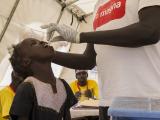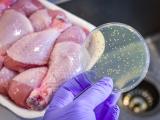May 25, 2010 (CIDRAP News) The US Food and Drug Administration (FDA) has progressed with strengthening known weaknesses in food safety research, but significant gaps are hampering the agency's oversight of food labels, fresh produce, and dietary supplements, according to a report by the Government Accountability Office (GAO).
The GAO conducted the review at the request of the US House of Representatives science and technology committee, which asked for an accounting of ways the FDA can use science to better support its regulatory work and communicate with the public about food safety.
According to the 25-page report released yesterday (but dated Apr 23), in 2007 the FDA's own science board raised concerns that the agency has serious deficiencies in its scientific base and organizational structure that threaten its ability to meet current and emerging regulatory responsibilities.
For example, the GAO said these scientific deficiencies have limited the FDA's ability to integrate risk analysis into food safety oversight. The GAO's list of recommendations includes the development of a new science organization to play a key leadership role.
One of seven areas identified as needing a stronger scientific base was detection of foodborne viruses. The GAO noted that the FDA's Center for Food Safety and Applied Nutrition recently hired two virologists and two fellows who are specifically trained in regulatory science and is in the process of leveraging virology research through its academic and interagency connections.
In May 2008 the FDA created the office of chief scientist, first held by Dr Frank Torti and now held by acting chief scientist Dr Jesse Goodman.
According to the report, the research gap in food labeling leads to possible inaccuracies in nutrition facts labeling, and the gap in dietary supplement science slows the agency in banning harmful products, such as ephedra, from the market.
In the food safety arena, gaps in science are making it difficult for the FDA to decide how to regulate fresh produce, which has been the subject of several recent foodborne illness outbreaks, most recently in fresh greens and sprouts, the GAO said. Investigators pointed out that, though cattle are known carriers of Escherichia coli O157:H7, scientists still don't fully know how the pathogen contaminates produce and how far cattle should be kept from leafy green growing areas.
"Lacking such information, FDA largely relied on qualitative informationsuch as history of past outbreaksto rank the risk levels of fresh produce," the GAO wrote.
The group acknowledges that the FDA has taken some steps to fill its food safety science gaps, such as studying Salmonella contamination in tomatoes, but it added that budget constraints have slowed the progress.
FDA authorities rely on other federal agencies for some of its scientific knowledge, but the GAO said it can be difficult to tailor those projects to the FDA's needs.
GAO investigators praised the FDA for its work on a new computer tool to screen and evaluate the risk of imported foods, but recommended that it develop a performance measurement plan to measure its effectiveness. The FDA conducted pilot tests on the PREDICT (Predictive Risk-Based Evaluation for Dynamic Import Compliance Targeting) tool in 2007 and is deploying it on a district-by-district basis, the report said.
In its response to the GAO findings, the FDA said it agreed that a science-based foundation is vital to is mission and that it was already taking steps to address all of the gaps outlined in the report. It pointed out that federal, industry, state, local, and consumer efforts to strengthen food safety will fall short if Congress doesn't pass the food safety modernization legislation now being considered and doesn't provide enough resources to sustain the system.
The FDA said it has made progress in improving methods for recovering pathogens from produce, such as Salmonella on high-risk commodities like tomatoes, spinach, and hot peppers.
See also:
May 24 GAO report on food safety research gaps
Dec 5, 2007, CIDRAP news story "Report says stingy funding has put FDA in crisis"

















